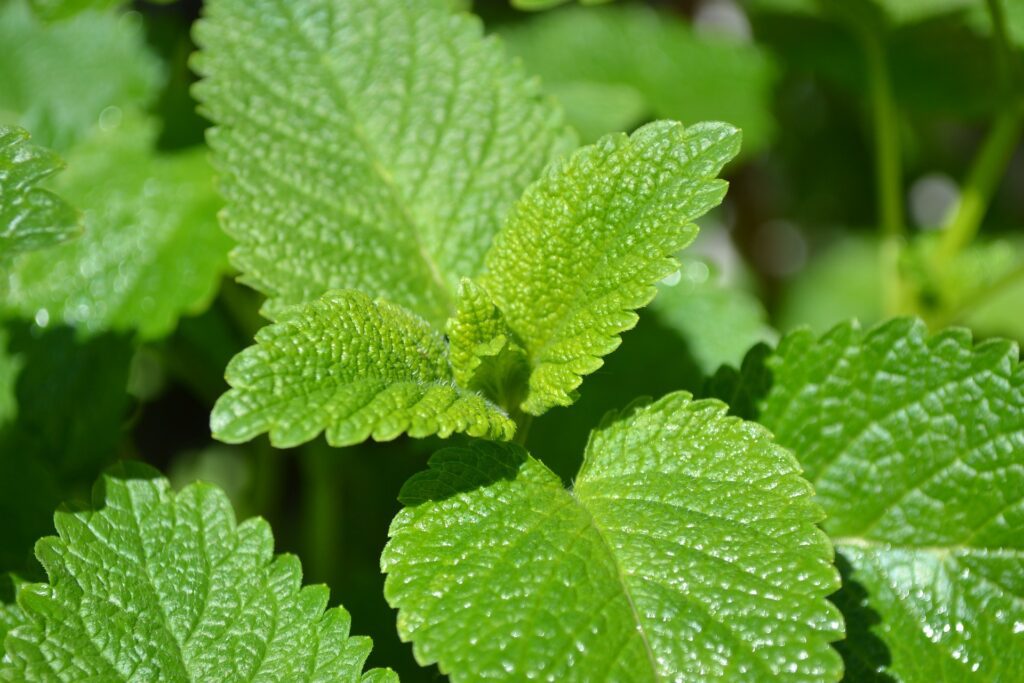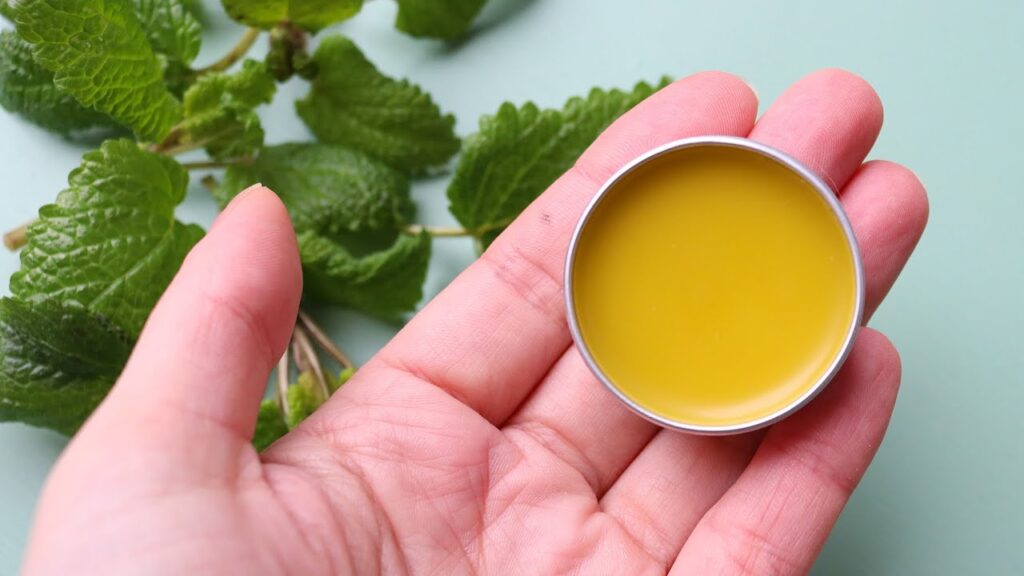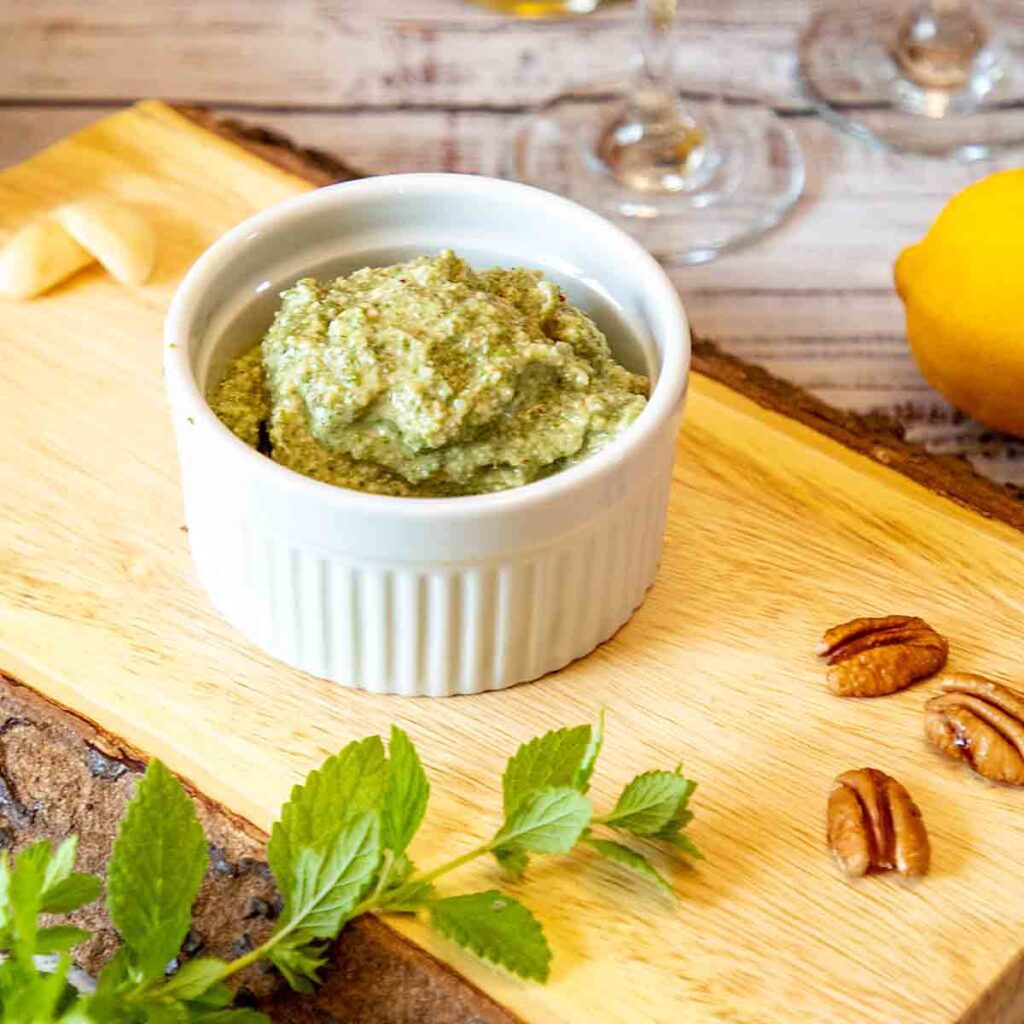The Health Benefits and Practical Uses of Lemon Balm

1. Introduction
For centuries, lemon balm (Melissa officinalis L., a member of the mint family) has been utilised in herbal medicine. The name comes from the Greek word “melissa”, which means honeybee. Lemon balm was traditionally used as an infusion in the amount of 10–25 g/day as an antispasmodic, anti-anxiety, and sleep-inducing agent and for digestive problems, wrinkles, and skin erythema 1. Lemon balm has also various practical uses, such as panacea, ethereal oil, shrubby plantations (hedge), and insect-repellent plant.
Essential oil of lemon balm was used in a variety of cosmetic and perfumery formulations and is regarded as a baseline fragrance in perfumery. Essential oil isolated from aerial parts of lemon balm in 10 plants has also been used in traditional medicine, perfumes, odorous, soaps, and food industries.
The main bioactive compounds in lemon balm are phenolic acids (rosmarinic acid, caffeic acid, chicoric acid, and ferulic acid) and flavonoids (luteolin, apigenin, ericetin, and quercetin). Prevention of cellular and plasma lipoproteins oxidation and inhibition of pro-oxidative enzyme activities including lipoxygenase, cyclooxygenase, xanthine oxidase, and angiotensin-converting enzyme are other important biological activities of lemon balm. Plant extracts have also hypolipidemic, anti-inflammatory, cardioprotective, antithrombotic and mild hypoglycemic abilities 2.
1.1. What is Lemon Balm?
Lemon Balm is known for its calming properties and mild sedative effects that may help with stress, insomnia, indigestion, and menstrual cramps. Melissa officinalis L., member of the family Lamiaceae, is one of the most widely known and widely used medicinal plants in Europe and is widely cultivated for its flavorful leaves. Traditionally, lemon balm has been used to relieve stress and anxiety, promote sleep, improve digestion, and ease pain as an herbal tea or infusion 1.
Lemon balm is native to southern Europe and Mediterranean countries, and is regarded as an important herb in many countries due to its physiological characteristics and physiological activity. As a popular herb, lemon balm’s delicious aroma and unique flavor are widely applied in beverages, juices, alcoholic drinks, soft drinks, edible jellies, sweets and processed foods 2.
2. Nutritional Composition
Lemon balm (Melissa Officinalis L.) is a popular remedy, primarily for mild anxiety, stress, insomnia, and digestive complaints. It has been used for thousands of years and various methods of application have developed. It is predominantly used as herbal teas, in cosmetics or odor in food applications, and more recently in innovative food products.
These results demonstrate that the lemon balm products were capable of benefiting a number of aspects of mood and performance. 3 g lemon balm and fruit sweetener was associated with lower state anxiety and better working memory at both 1 and 3 h post-ingestion. At this dose, it appears that the lemon balm drink is capable of anxiolysis for a sustained period 2.
However, in the case of pharmaceutical anxiolytics, one might also expect impairments to performance, including reduction in psychomotor and working memory capabilities. 3 g lemon balm drink, there was no impairment to psychomotor performance, and working memory performance was significantly improved by the same treatment at both 1 h and 3 h.
Using a similar paradigm to the current study, the authors found increased calmness following one dose of lemon balm and while there were no cognitive costs associated with that dose, there were also no cognitive benefits. 6 g dose of lemon balm also improved mathematical processing at 1 h only. The same dose also significantly improved psychomotor performance, as assessed by the tracking module, at both post-drink time points 1.
2.1. Key Nutrients in Lemon Balm
According to the European Medicines Agency and the World Health Organisation, lemon balm is referred to as Melissa officinalis L., and it is a member of the Lamiaceae family, a well-known medicinal plant. Traditionally, lemon balm has been used in herbal folk medicine as a gentle sedative and antispasmodic for digestive complaints 1.
Lemon balm is nowadays used for upcoming health issues, like maintaining better sleep, neuroprotection, preventing cognitive decline and some pharmacological uses like anticarcinogenic, antibacterial, antidiabetic, and antiviral properties. Melissa officinalis is commercially cultivated in many countries all over the world, especially in Europe.
The lemon balm leaves are oval or egg-shaped and lemon-scented when bruised. They contain essential oil, flavonoids, rosmarinic acid, and phenolic acids. Lemon balm preparations were examined for their nutraceutical potential with antioxidant, antidiabetic, and antibacterial properties. Germinated seeds and micropropagated plants of lemon balm also possess high antioxidant activity. The oil has a pleasant smell and is used in aromatic chemicals, soaps, perfumes, cosmetics, and beverages 2.
3. The Health Benefits and Practical Uses of Lemon Balm

Lemon balm (Melissa officinalis L.) is a perennial herb belonging to the Lamiaceae family. The plant grows up to three feet tall, and the leaves are bright green, having a lemon scent when crushed, an odour due to the essential oil citronellal. The herb has been known for centuries for its potential therapeutic properties.
It is an important medicinal herb, having sedative, calming, carminative, and antispasmodic properties. Lemon balm is used in traditional herbal medicine to treat headaches, rheumatism, and indigestion, to reduce menstrual and digestive cramps, and to shorten attacks from hypersensitivity 3.
Taking lemon balm is recommended as a treatment of stress. In modern herbal medicine, lemon balm is used for mild anxiety, nervous tension, and agitation in children, creating a calm, positive mood without drowsiness. After ingestion, lemon balm is quickly absorbed. In healthy participants, 300 mg of lemon balm was shown to significantly improve calmness and alertness and reduce anxiety, hunger, and cognitive demand compared with a placebo.
Interestingly, these effects were most pronounced in participants with higher baseline mood disturbances, who responded better to lemon balm than those with lower mood disturbances. A dose of 600 mg of lemon balm also reduced stress indicators and improved working memory 2.
3.1.. Stress and Anxiety Relief
Lemon balm is a member of the mint family, known for its soothing lemon aroma. It has been used throughout history as an herbal remedy in beverages, food items, and topical applications due largely to its effects on mood and cognition. It lends itself easily to various preparations, and both traditional and modern practices support these uses with anecdotal observations and research.
Melissa officinalis may be beneficial for relieving stress and anxiety, as well as improving mood and cognitive performance 2. With at least eleven species found in North America, the plant occurs in most temperate regions around the world, suggesting it might be useful for similar applications worldwide.
The overall goal of the research carefully reviewed in this article was to investigate the effects of Lemon balm consumption on mood and performance. Separate studies explored the acute and safety parameters relating to its use in track and field sports. To specifically look for effects attributable to lemon balm, the mood-enhancing properties of a commercially available lemon balm soda and a caffeinated herbal cola drink were studied in comparison to placebo sodas.
The mood and performance benefits arising from the use of lemon balm products revealed a consistent improvement in mental health, a largely underaddressed issue.
3.2. 2. Improved Sleep Quality
The calming effects of Lemon Balm have been studied since the Middle Ages, and they remain the best-documented health effects of the plant. This has been confirmed in placebo-controlled studies, both in cooperation with the pharmacological industry and in ongoing studies sponsored by the German Federal Ministry of Education and Research.
Lemon balm has beneficial effects on several aspects of mood and performance and attenuates endothelial dysfunction after psychosocial stress 2. Low doses of lemon balm should be combined with other stress-reducing natural products in order to test their co-use under one common umbrella product.
Comparable to the ice-cold stress test, lemon balm showed beneficial effects on self-rated calmness and nervousness directly. Positive effects were found at 1 h post-ingestion to the self-rated “calm” and “nervous” scale items in the watermelon-melon lemonade and apple juice groups. However, the calm and nervous findings were opposite with respect to the lemon balm words, but the effects were fast-acting and able to prevent the increase in nervous feelings.
Calm and nervous were mood adjectives assessed in Study 1. Given the mood adjective categories used in Studies 1 and 2, the lemon balm products seem to evoke a calm, quiet, peaceful, and controlled state that is different from the frozen yoghurt drinks. The consumption of such lemon balm-containing products was associated with a decrease in subjectively rated tension and anxiety following a stressful task.
4. Culinary Uses of Lemon Balm

Lemon Balm, a perennial herb from the mint family (Lamiaceae), is widely recognised as a natural flavouring agent that enhances the taste of beverages. Although it is mostly known as an infusion for a mild herbal tea, lemon balm extracts can make other. Refreshing non-alcoholic beverages can be flavoured with lemon balm, reminiscent of lemonade, and can boost both antioxidant and organoleptic quality 1.
Lemon balm extracts are used as established traditional herbal medicinal products in the EU for nervous restlessness, anxiety, digestive problems, flatulence, and an unsettled stomach. They have generally been recognised as having (“GRAS”) status in the USA. Dried lemon balm leaves are also used as an ingredient in syrups and soft drinks where citrus flavours are desired 3.
Lemon balm (Melissa officinalis L.) is a lemon-scented herb of the mint family that appears to be helpful in the management of anxiety and depression and is frequently included in dietary supplements. Teas flavoured with freshly converted lemon balm make a nice introduction to Discover Lemon Balm.
This enhancement is partly due to the citrusy aroma of lemon balm, which can quickly invite the curious to take a mouthful of anything that looks cool and slightly lemon-lime green at the same time, and partly it provides the extraordinary and pleasant flavour of Lemon balm.
4.1. 1. Flavoring Teas and Beverages
To prepare a lemon balm infusion, take 1-3 g of dried leaves and pour 200 ml of boiling water over them. Cover the vessel and leave it to stand for 10-15 min. Pour through a strainer and sweeten with honey if desired. The infusion is of a greenish colour and has a pleasant lemony aroma and flavour.
It can be consumed hot or cold. An infusion of 1-2 quantities of lemon balm can be taken daily. An infusion with orange peel and peppermint (2 parts each) has a nice flavour and is somewhat more stimulating. In summer, the infusion can also be enjoyed with lemonade. Lemon balm is used in the manufacture of a special tea that is claimed to be helpful in treating nervous disorders and sleep disturbances 2.
Lemon balm leaves are also commonly used in baking. They can be chopped finely with sugar or honey to fill cakes and muffins. Finely chopped leaves can also be sprinkled over cottage cheese, cream cheese, or yoghurt, or used to flavour rice or fish dishes. In Byzantine cooking, they flavour pastries and candies.
Fresh lemon balm leaves are rather mild in flavour, and similarly, fresh lemon verbena leaves (Aloysia triphylla) need to be used generously for the flavour to be perceived. Dried leaves, in turn, are considerably more aromatic than dried leaves of lemon verbena. Lemon balm leaves can also add a lovely citrusy flavour to jams and jellies. An infusion prepared from lemon balm leaves added to the fruit juice can help preserve the flavour and colour of jams. It is also widely used for flavouring liqueurs and vermouths 1.
Also Read: The Impact of Insects on Lemon Balm Plants in the Garden
5. Cosmetic and Aromatherapy Applications
Do-it-Yourself Lemon Balm Skin Care Products
Lemon balm is a popular herb with edible leaves and a soothing lemony scent. It can be used to make simple do-it-yourself skin care products, such as toner, lotion, and oil. With its ability to calm irritation and reduce redness, it is especially beneficial for sensitive skin.
Lemon balm toner can be made by steeping dried leaves in witch hazel or vinegar for 15 days. The infusion can then be filtered and combined with other ingredients like lavender or essential oil. Alternatively, a calming lemon balm lotion can be made by steeping leaves in warm water for 30 minutes. After blending and straining for 20 minutes, the remaining liquid can be mixed with other ingredients like aloe gel and essential oil.
Lastly, dried lemon balm leaves can be infused in oil for hair care products. This aromatic oil can soothe itchy scalps, reduce oiliness, and promote hair growth. Users can massage it into their scalp before washing to make their hair smell amazing while benefiting from the herb’s calming and nourishing properties. Overall, lemon balm has many cosmetic and aromatherapy uses beyond its culinary applications 1.
Aromatherapy Ingredients
Lemon balm essential oil can be extracted from its fresh leaves through steam distillation. It has a mild lemon scent and can be used to evoke calming vibes and fulfil aromatherapy wishes. Blending the oil with other essential oils, like lavender, can create beautiful perfumes or massage oils. Due to its price, lemon balm is often used as a fragrance in lotions instead of say, Neroli or rose oil.
5.1. 1. DIY Skin Care Products
Skincare products that can be made by hand are preferred by many since they are easy to attain. There are a number of recipes for lotions, creams, and rubs that boast the healing properties of the common garden herb Melissa officinalis L., lemon balm, yet few scientific studies exist to show that it is more than just a wonderful plant fragrance.
When a lemon balm lotion and balm were made at home by two different users and then sent to a chemistry laboratory for phytochemical analysis, it was found that the lotion made from freeze-dried leaves had higher levels of caffeic acid, phenethyl ester, rosmarinic acid, and a number of flavonoids, notably hesperidin, than the lemon balm balm made from fresh leaves. The lotion balm was found to have higher amounts of quercetin than both homemade samples 1.
Many of the active ingredients previously reported in lemon balm were found here, and a number of new ones were found as well, including the anti-malarial compound artemisinin. With the exception of quercetin, both homemade samples were found to have a lower concentration than commercial lemon balm products being offered on the market.
The lotion made from freeze-dried leaves was much better than the balm for homemade products to consider 2. Lemon balm is widely used in beverages, sweets, and other foods due to its pleasant aroma and activity. With its antioxidant activity, lemon balm may be a great ingredient in homemade skincare products.
References:
1. Inês Dias M, Barros L, João Sousa M, C.F.R. Ferreira I. Systematic comparison of nutraceuticals and antioxidant potential of cultivated, in vitro cultured and commercial Melissa officinalis samples. 2012. [PDF]
2. Scholey A, Gibbs A, Neale C, Perry N et al. Anti-Stress Effects of Lemon Balm-Containing Foods. 2014. ncbi.nlm.nih.gov
3. Ieri F, Cecchi L, Vignolini P, Belcaro MF et al. HPLC/DAD, GC/MS and GC/GC/TOF analysis of a lemon balm (Melissa officinalis L.) sample as standard raw material for food and nutraceutical uses. 2017. [PDF]